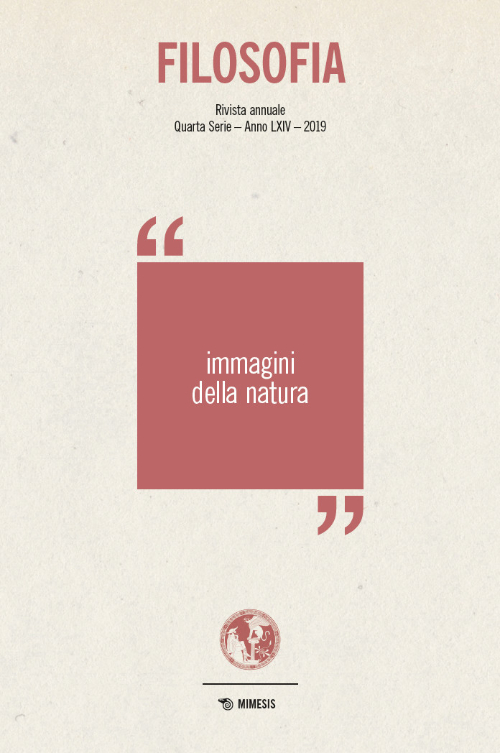What is “The End of Nature”?: Modernity and Ambivalent Heterotopias
DOI:
https://doi.org/10.13135/2704-8195/4058Keywords:
end of nature, modernity, heterotopias, GiddensAbstract
The paper aims to clarify the meaning of the diagnosis ‘the end of nature’, which Anthony Giddens distinguishes as the most important characteristic of late modernity. This view assumes that modernity frames our questions about nature in such a way that makes them appear as a problem of control. Revealing the manner of this framing is the paper’s major objective. It begins with an examination of the meaning of the end of nature as a diagnosis announced by McKibben and Giddens; then it seeks to foreground the roots of modern outlook in modernity, which shaped self-reflective thinking; and moves to an analysis of the structures of high modernity as described by Giddens. The reflexivity of modern institutions, the disembedding of time and space, and the colonisation of nature are distinguished as the aspects that most crucially determine contemporary attitudes towards nature. The paper concludes that the end of nature should not be understood as the decay of natural territories and species but, rather, as the absolute hegemony of modern outlook so that even the territories of wilderness are managed in terms of internally reflexive modern systems. The territories of wild nature turn into ambivalent heterotopias subjected to modern protection and control, both of which, in the Anthropocene epoch, turn out to be limited and questionable approaches.
Downloads
References
M. Arias-Maldonado, Environment and Society. Socionatural Relations in the Anthropocene, New York City, Springer, 2015
T. Clark, Ecocriticism on the Edge. The Anthropocene as a Threshold Concept, London, Bloomsbury, 2015
R. Descartes, A Discourse on the Method of Correctly Conducting One‘s Reason and Seek-ing Truth in the Sciences (1637), Engl. transl. by I. Maclean, Oxford, Oxford University Press, 2006
H. Ellis-Petersen, Last male northern white rhino is put down, in The Guardian, 20 March 2018, Internet edition, <https://www.theguardian.com/environment/2018/mar/20/last-male-white-rhino-is-put-down>
J. Foster, What Price Interdisciplinarity?: Crossing the Curriculum in Environmental Higher Education, in “Journal of Geography in Higher Education”, XXIII (1999), n. 3
M. Foucault, Different Spaces (1967-1984), in Aesthetics, Method, and Epistemology, ed. by J. D. Faubion, Engl. transl. by R. Hurley and others, New York, The New Press, 1998
A. Giddens, Modernity and Self-Identity. Self and Society in the Late Modern Age, Cambridge, Polity Press, 1991
A. Giddens, The Consequences of Modernity, Cambridge, Polity Press, 1991
A. Giddens, Ch. Pierson, Conversations with Anthony Giddens, Making Sense of Moder-nity, Cambridge, Polity Press, 1998
J. Habermas, The Philosophical Discourse of Modernity. Twelve Lectures (1985), Engl. tran-sl. by F. Lawrence, Cambridge, Polity Press, 1990
M. Heidegger, The Question Concerning Technology (1953), in The Question Concerning Technology and Other Essays, Engl. transl. by W. Lovitt, New York and London, Garland Publishing, 1977
E. Husserl, The Crisis of European Sciences and Transcendental Phenomenology: An Introduction to Phenomenological Philosophy (1936), Engl. transl. by D. Carr, Evanston, Northwe-stern University Press, 1970
I. Kant, Critique of Pure Reason (1781), Engl. transl. and ed. by P. Guyer and A. W. Wood, Cambridge, Cambridge University Press, 1998
B. McKibben, The End of Nature. Humanity, Climate Change and Natural World, London, Bloomsbury, 2003
T. Toadvine, Merleau-Ponty’s Philosophy of Nature, Evanston, Northwestern University Press, 2009
P. Rincon, Why did Copenhagen Zoo kill its giraffe?, in BBC News, internet edition, 10 February 2014, https://www.bbc.com/news/science-environment-26118748
W. Welsch, Unsere postmoderne Moderne, Berlin, Akademie Verlag, 2008, p. 82



